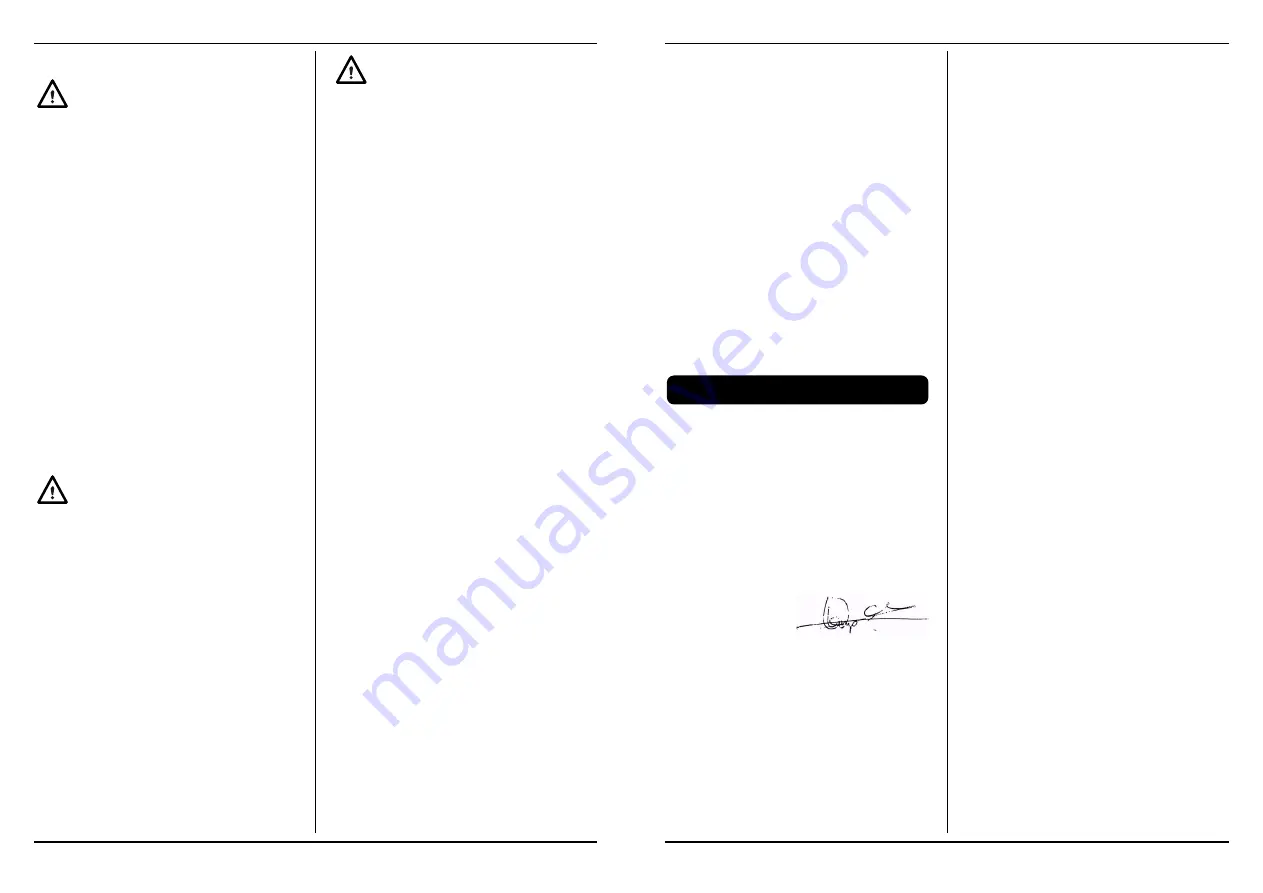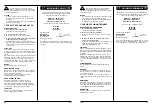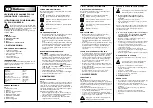
.
!"
,
.
! "
"
.
# $ !"
# $
,
,
. !,
.
%
,
.
% ,
&
"
EN60745-1, EN60745-2-4,
EN55014-1, EN55014-2,
EN61000-3-2, EN61000-3-3
98/37/EEC
73/23/EEC
89/336/EEC
01-06-2004
ZWOLLE NL
W. Kamphof
"
' &
,
.
CE
ı
%&&'( )
(GR)
Ferm
45
REPLACING WORN SANDING PAPER
Fig. 3
Before assembly sanding paper always remove
the plug from the mains.
1. The sandpaper (7) is fixed by Velcro fast-
ener to facilitate the replacement.
•
Simply pull off the sanding paper
•
Press the new one in the centre of the sanding
sole (8)
Coarse sand-paper (grain 50) removes in general the
bigger part of the material and fine sand-paper (grain
120) is used for the finishing.
2. The sanding machine is provided with a
rectangle sanding sole. By tightening the
sandpaper it does not wear out so fast, so it
will wear well longer.
•
Open the back paper clamp (4) by pulling the
handle (5) up.
•
Install the sandpaper under the clamp. Put the
paper in the middle of the sanding sole and look
after the perforations in the paper. They have to
correspond with those on the sanding sole, so
that the dust can be exhausted.
•
Push the handle back into its original position.
•
Repeat the operation to fix the sand-paper on the
front side.
•
Fix the sandpaper as tight as possible.
REPLACING THE SANDING SOLE
The sole has to be replaced when the Velcro has
been worn out.
Before replacing the sanding sole disconnect the
sander from the mains.
•
Remove the sandpaper of the sole.
•
Remove the screws which the sole is fixed to the
sander.
•
Remove the sole.
•
Install the new sole on the sander.
•
Tighten the screws well.
4. USE
OPERATION
•
Hold the sander on the handle (2), so as to gain
the best possible control over your sanding ope-
rations.
•
The ventilating apertures (6) on the housing must
remain clear to ensure optimum cooling of the
motor.
•
Push the on/off switch (1) to start the machine.
•
Move the sander over the surface of your work-
piece.
•
Push the on/off switch to stop the machine.
Prevent pushing too much on the machine
during sanding. Excessive sanding pressure does
not lead to increased sanding capacity, but increases wear
of the machine and the sandpaper .
USER TIPS
•
Apply long uniform movements to your sander to
obtain the best possible results.
•
The surface quality after sanding is determined by
the selected grain.
5. SERVICE & MAINTENANCE
TROUBLESHOOTING
1. The electromotor gets hot:
•
Clean the ventilating apertures
2. The dust is not extracted:
• The dust bag is full / empty the dust bag
3. The abrasive paper is filled with adhesive/-
paint or a similar material:
• Paint or adhesive is not really dry.
• Some paints stick more to the abrasive paper
than others / clean the abrasive paper at regular
intervals
CLEANING
Clean the housing regularly with a soft cloth, prefera-
bly every time it is used. Keep the ventilating apertu-
res free from dust and dirt.
Remove stubborn dirt with a soft rag moistened in
soapy water. Do not use any solvents such as petrol,
alcohol, ammonia, etc. as such substances can damage
the plastic parts.
LUBRICATION
The appliance does not need any extra lubrication.
FAULTS
If a fault arises through wear in an element, please
contact the service address shown on the warranty
card.
A drawing of the spare parts that may be obtained is
included at the end of these operating instructions.
ENVIRONMENT
To prevent damage during transport, the appliance is
delivered in a solid packaging which consists largely of
reusable material. Therefore please make use of
options for recycling the packaging.
WARRANTY
Read the terms of warranty on the separate warranty
card which is enclosed.
4
Ferm





































